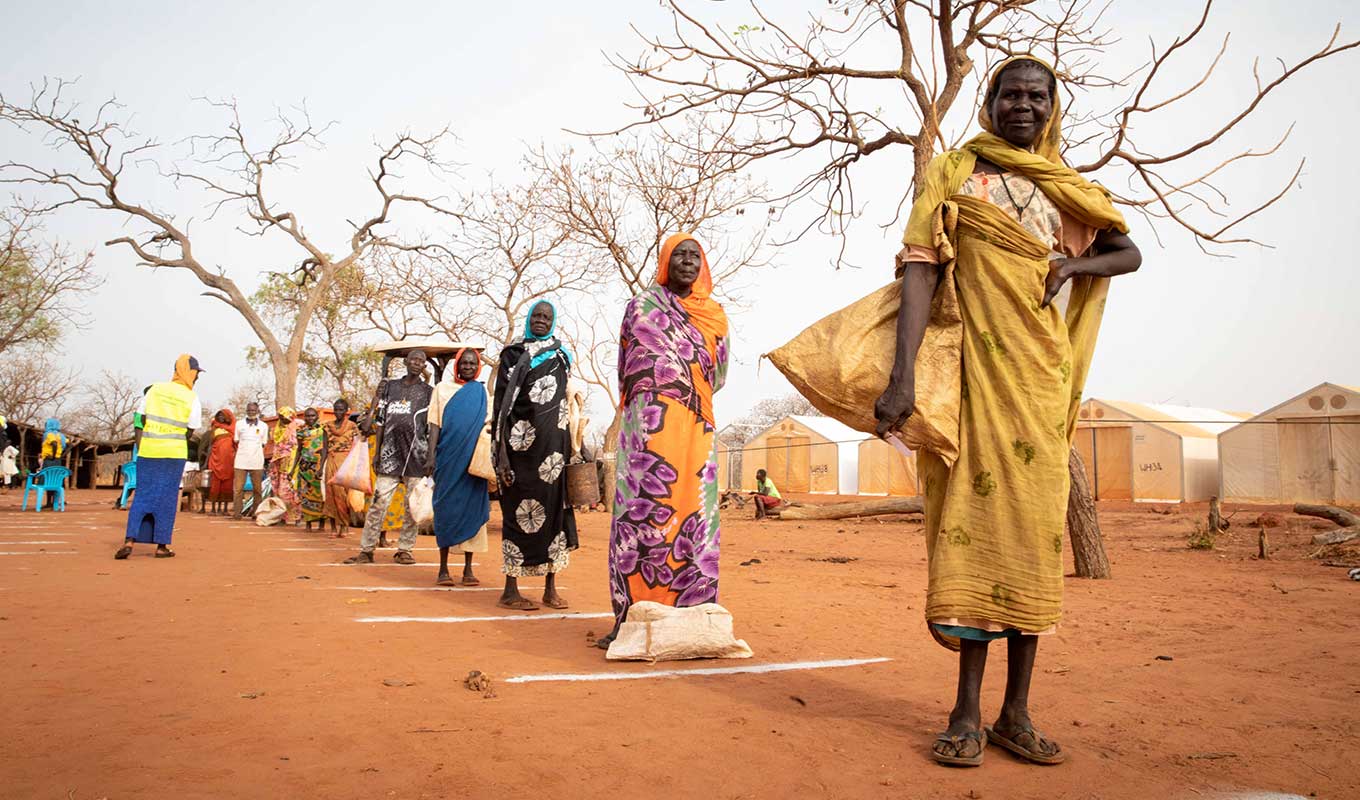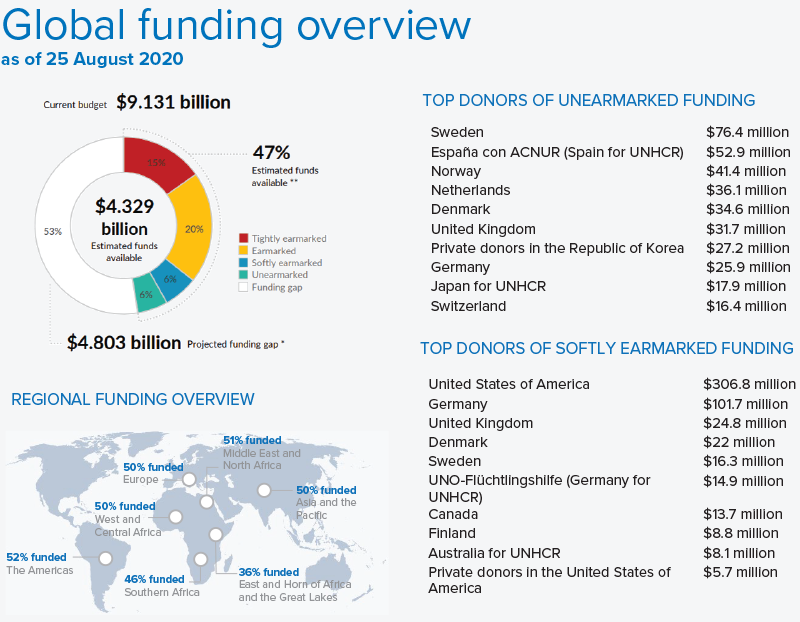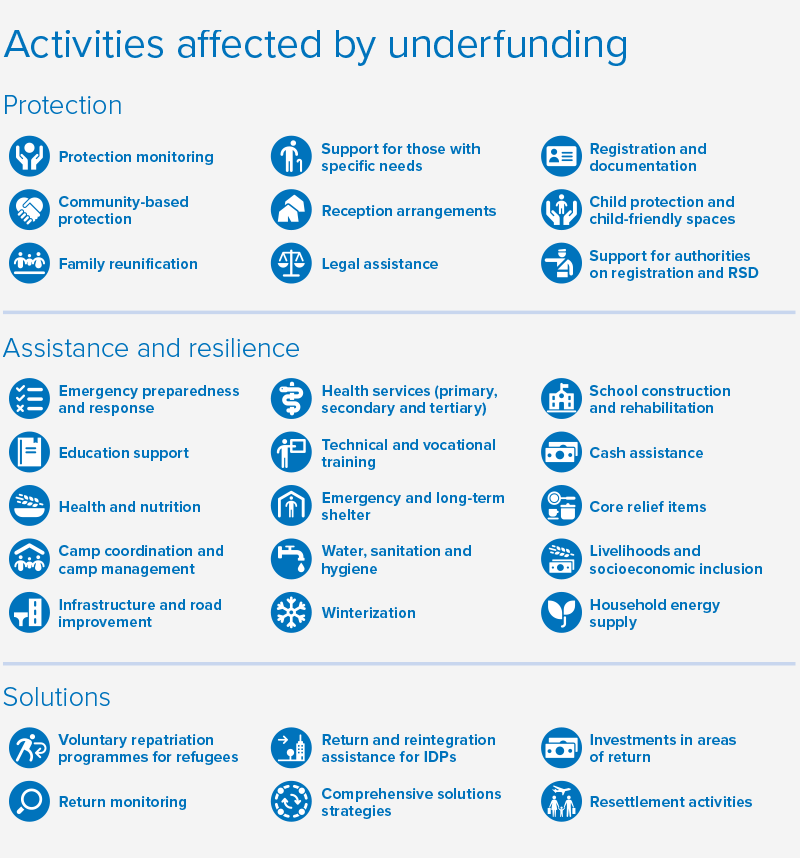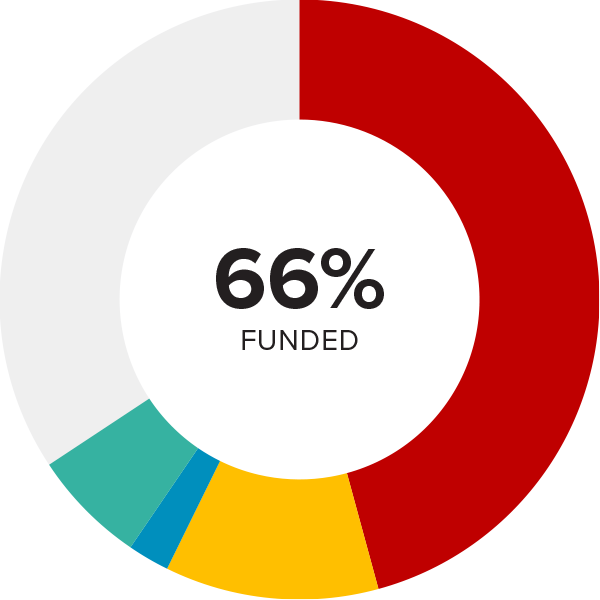Somali refugee women gathered in the Women’s Wellness Centre, run by the International Medical Corps in Melkadida Refugee Camp in Ethiopia. © UNHCR/Georgina Goodwin
UNHCR is mandated to provide protection, assistance and solutions for refugees, asylum-seekers, returnees, stateless persons, internally displaced people and others of concern to the Office, of whom there were 86.5 million at the end of 2019.
With COVID-19 sweeping the globe, more than 20 million people worldwide are confirmed to have been infected, including more than 19,000 people of concern to UNHCR, a number which is almost certainly not reflective of the reality.
The COVID-19 crisis has exacerbated the already dire humanitarian needs globally, particularly in low and middle-income countries, which currently host more than 85% of the world’s refugees. The pandemic is destabilizing entire sectors of the economy, with millions depending on fragile incomes that are now at risk. More generally, violence, persecution and civil strife continue to uproot millions. Few conflicts have abated in recent months, while some, such as in the Democratic Republic of the Congo, Libya, the Sahel and the Syrian Arab Republic, have gotten worse. Driven in part by the effects of the pandemic on livelihoods, gender inequality and gender-based violence have increased, internal displacement has been exacerbated, and freedom of movement and access to asylum reduced.

Sudanese refugees observe physical distancing while listening to health and sanitation messages over a speaker system at Ajuong Thok camp in South Sudan. © UNHCR/Elizabeth Marie Stuart
All these trends are likely to continue through 2020, with the virus acting as a ‘force multiplier’, making the needs of people of concern to the Office more acute and more complicated to address. UNHCR has already take steps to invest more in key areas in response to the protection, public health and socio-economic impacts of COVID-19 on people of concern. This includes ramping up cash assistance, which is fast, safe and can help cover rent, food, and other basic needs that arise for refugees and displaced persons. Water, sanitation and hygiene, shelter capacity, and health services are all being reassessed to take into account COVID-19 prevention and response. It includes partnerships, especially at the national level, in which UNHCR has already invested considerably in the context of the Grand Bargain and the Global Compact on Refugees, and which are even more indispensable in the midst of a pandemic as knowledge, access and trust at the community level is essential. And it includes ways of working, harvesting lessons about how UNHCR performs and delivers protection and aid, remotely and in-situ, to inform our transformation and engage with partners on the future of work.
But the important factor to stress is that UNHCR’s work has not stopped.
Beneath the trends caused by the virus, serious as those are, the triggers and drivers of forced displacement remain, as do the needs of people of concern and the challenges in providing protection, assistance and solutions.
UNHCR’s budget was $9.131 billion with, as of the end of August 2020, funds available to it of $4.458 billion. This included $3.804 billion in voluntary contributions, of which 72% was either earmarked or tightly earmarked. Overall, UNHCR’s budget had a funding gap of 51%.

* A detailed breakdown is available here.
** Percentages may not add up to 10% due to rounding.
Further information on the use of flexible funding by UNHCR in 2019 is available in the Report on use of flexible funding in 2019
The effects of this underfunding are felt across the range of UNHCR’s activities and around the world. Ten situations—the primary subject of this report—are particularly affected. These situations comprise 56% ($5.160 billion) of UNHCR’s budget. Examples are given in each of these situations of where underfunding has already (as of August 2020) brought activities to an end, and where activities are on the brink of being cancelled or scaled back if funding is not forthcoming soon. As these examples show, underfunding is affecting all areas of UNHCR’s response, from protection, to assistance and resilience activities, to solutions.
While some instances of underfunding are due to new needs or reprioritization resulting from COVID-19, many examples pre-date the pandemic and demonstrate the impact that chronic underfunding can have on the lives of people of concern and UNHCR’s ability to respond.
These 10 situations also highlight the importance of flexible funding: all of them have benefited from allocations of flexible funds by the organization, which has gone some way to making up the shortfall. UNHCR wishes to extend its sincere thanks to all donors who have provided unearmarked and softly earmarked funding in 2020.

Top 10 most underfunded situations in 2020
as of 25 August 2020
SOUTH SUDAN SITUATION
$481.4 MILLION funding shortfall
$720.9 MILLION
UNHCR’s financial requirements 2020
DEMOCRATIC REPUBLIC OF THE CONGO SITUATION
$223.1 MILLION funding shortfall
$343.5 MILLION
UNHCR’s financial requirements 2020
SOMALIA SITUATION
$251.2 MILLION funding shortfall
$425.7 MILLION
UNHCR’s financial requirements 2020
CENTRAL AFRICAN REPUBLIC SITUATION
$90.8 MILLION funding shortfall
$150.4 MILLION
UNHCR’s financial requirements 2020
IRAQ SITUATION
$316.8 MILLION funding shortfall
$475.7 MILLION
UNHCR’s financial requirements 2020
BURUNDI SITUATION
$122.3 MILLION funding shortfall
$189.8 MILLION
UNHCR’s financial requirements 2020
SYRIA SITUATION
$1.240 BILLION funding shortfall
$1.991 BILLION
UNHCR’s financial requirements 2020
AFGHANISTAN SITUATION
$161.5 MILLION funding shortfall
$273.5 MILLION
UNHCR’s financial requirements 2020
VENEZUELA SITUATION
$143.3 MILLION funding shortfall
$260.7 MILLION
UNHCR’s financial requirements 2020
CENTRAL MEDITERRANEAN ROUTE SITUATION
$162.8 MILLION funding shortfall
$474.8 MILLION: UNHCR’s financial requirements 2020










